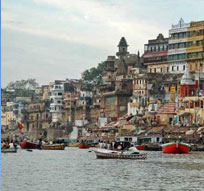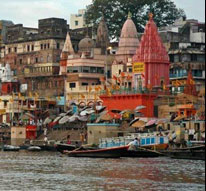Jantar Mantar - Jaipur, an astronomical observatory designed by the astronomer - King Sawai Jai Singh II of Jaipur, in 1724. It was believed to have been built with masonry instruments for observing the movements of the stars and the planets. The various abstract structures within the Jantar Mantar are, in fact, instruments that were used for keeping track of celestial bodies. It is the largest and best preserved of five observatories built by Jai Singh throughout northern India. It contains 13 different instruments for
calculating such things as the time of day, the altitudes of
heavenly bodies, and the positions of constellations. Although the
instruments look like modern sculpture, they are able to make
calculations accurate to one second.
Yet, Jantar
Mantar is not only a timekeeper of celestial bodies, it also tells a
lot about the technological achievements under the Rajput kings and
their attempt to resolve the mysteries regarding astronomy. The
Jantar Mantar of Delhi is only one of the five observatories built
by Sawai Jai Singh II, the other four being located at Jaipur,
Varanasi, Ujjain and Mathura.
Jai Singh himself
designed this yantra. Other yantras were also meant for the study of
heavenly bodies, plotting their course and predicting eclipses. The
two pillars on the southwest of Mishra Yantra are meant to determine
the shortest and longest days of the year. Interestingly, in
December one pillar completely covers the other with its shadow
while in June it does not cast any such shadow at all. After the
completion of the first Jantar Mantar and with a view to verifying
astronomical observations made at Delhi, Jai Singh built similar,
even if smaller observatories, at other important Indian
cities-Jaipur, Varanasi, Ujjain, and Mathura.
The
Jantar Mantars may have fallen into disuse but they remain an
integral part of India's scientific heritage. It presents that the
spirit of scientific enquiry was not dead in India and would have
yielded rich results if only an opportunity of research and
development had been given to it. This monument situated just a
stroll away on the Parliament Street, still remains one of the most
intriguing structures of the capital, one that burst in a flood of
questions inside the curious mind of the tourist. Timing : Daily
9.00am - 7.00pm.
Some of the instruments pictured
on this page are:
- The Samrat Yantra: a 89 foot high and 148 foot wide sundial.
When the sun moves across the sky, it casts a shadow on finely
calibrated arms extending on either side. It measures local
time, zenith distances, meridian pass times, and the declination
of the stars. It is used to forecast the crop prospects for the
year.
- The smaller Laghu Samrat Yantra is not as accurate as the
Samrat Yantra. However, it calculates Jaipur's local time to an
accuracy of 20 seconds.
- The Jaiprakash Yantra: the last instrument installed in the
observatory, it consists of two marble bowls. This instrument
aids in celestial observations and verifies calculations of
other instruments in the observatory.
- The Rashi Yantras: a collection of twelve instruments, each
representing one of the twelve zodiac signs. Therefore, each
instrument faces a different angle and constellation. It is used
by astrologers to make accurate horoscopes.









